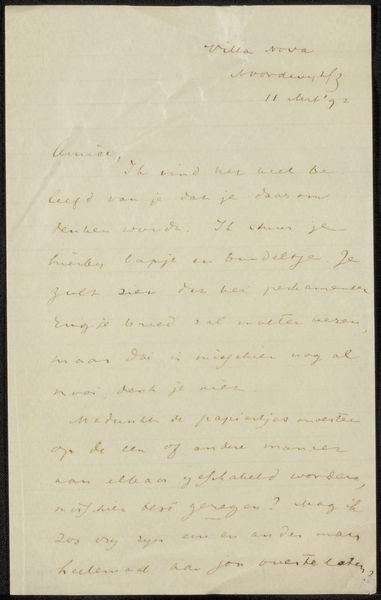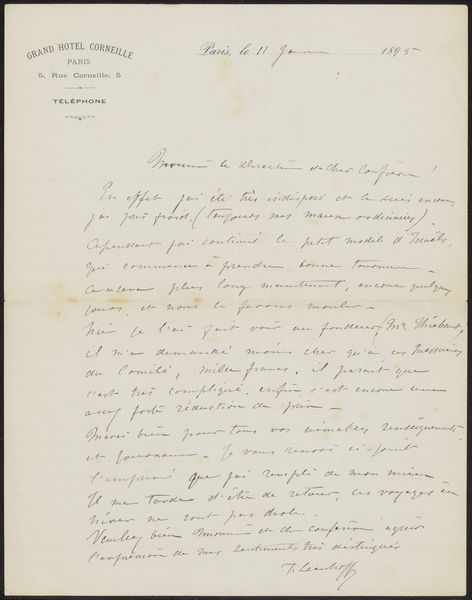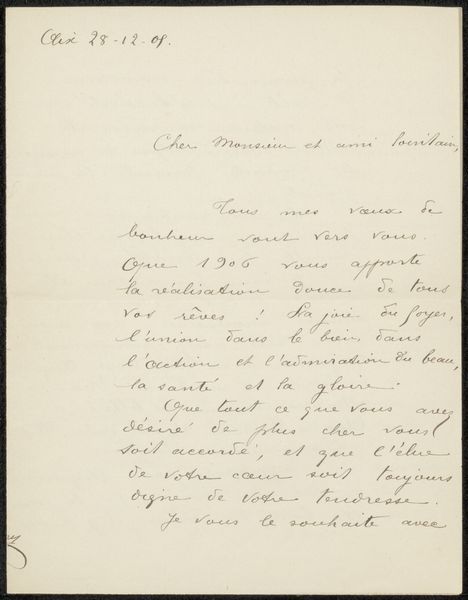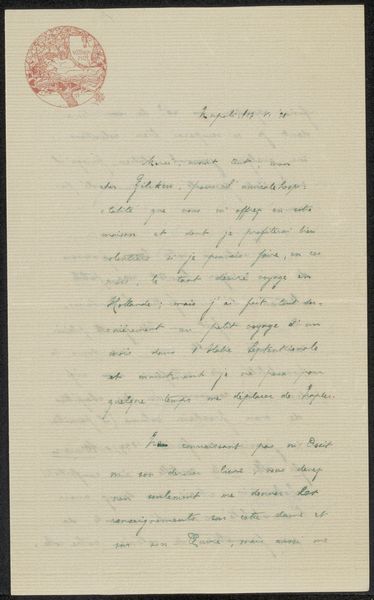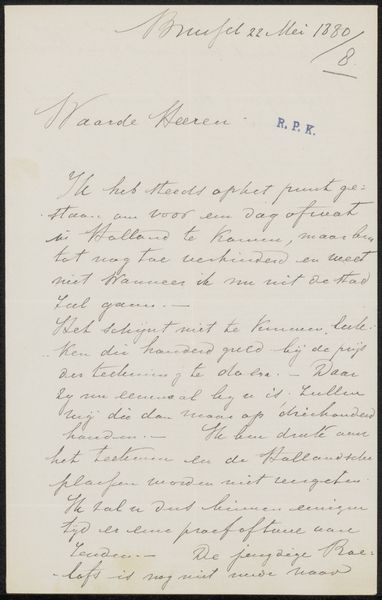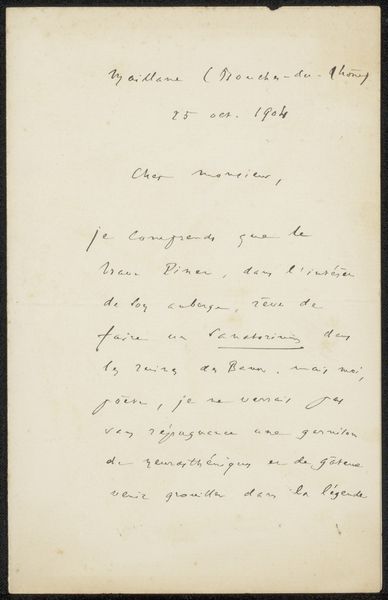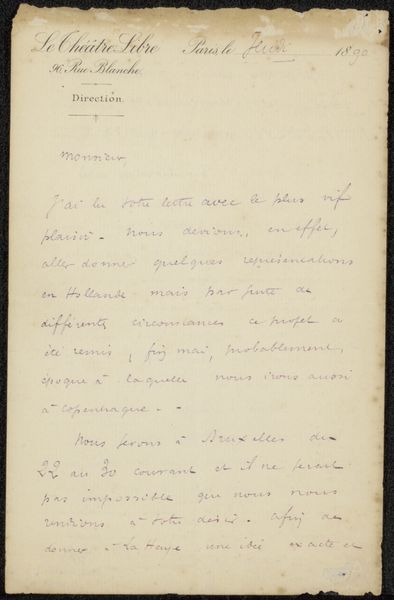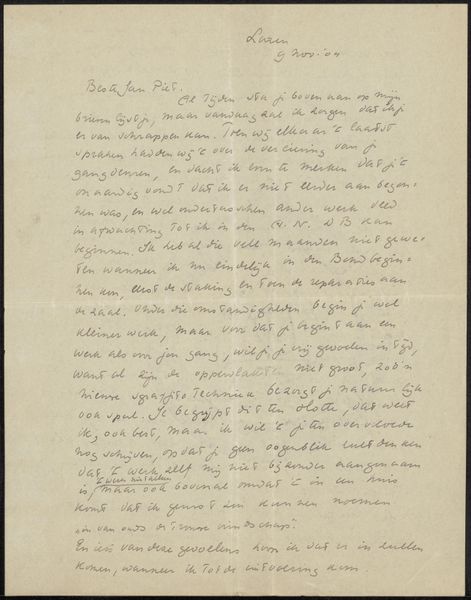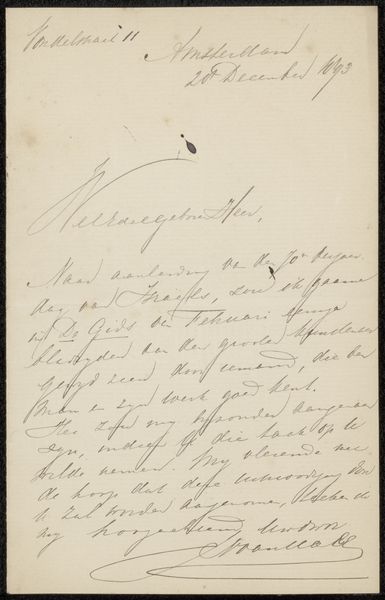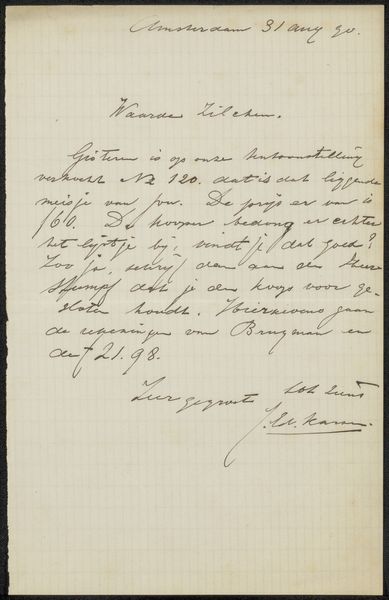
Copyright: Rijks Museum: Open Domain
Curator: What we have here is "Brief aan Philip Zilcken," thought to be from 1903, created by Vittorio Pica. It's an ink drawing on paper. What's your initial read? Editor: My first thought is, this isn’t something displayed to be overtly contemplated. A raw communication in blue-green ink. This hints to a period rife with shifting social stratifications where casual correspondence played an integral role in shaping cultural ideas. Curator: Precisely. The composition certainly points to function over form; it’s a letter, not explicitly crafted for aesthetic contemplation. However, observe the deliberate slant of the handwriting, the careful looping of certain letters. These give texture and individuality to something functional. Editor: But to whom was Vittorio writing, and what historical structures might inform a contemporary viewer’s response? The turn of the century marks not only a significant period in modernism, but an increasing access to information. We are looking at an era defined by empire and social divisions in Europe. How do these facts inform his aesthetic choices in art or daily life? Curator: Undoubtedly, that context is crucial. Consider, however, how Pica uses the texture of the paper, the variation in ink density to provide a subtle visual counterpoint to the message's literal meaning. These small moments echo more substantial artistic values. The visual texture isn't just arbitrary but intrinsically linked to the creation and reception of a formal exchange. Editor: I agree there is visual tension, and the intimacy of ink on paper cannot be overlooked. How does Pica challenge conventions and hierarchies through his penmanship, to affect readership and impact of distribution? The fact that we have access to this today creates the potential to challenge previous social norms of scholarship and access. Curator: A potent consideration. It underscores the lasting tension between our appreciation of artistry and understanding its historical imprint. Editor: Indeed, art-historical discourse gives us all an opportunity to ask these probing questions. Thank you for bringing this artwork into focus.
Comments
No comments
Be the first to comment and join the conversation on the ultimate creative platform.
